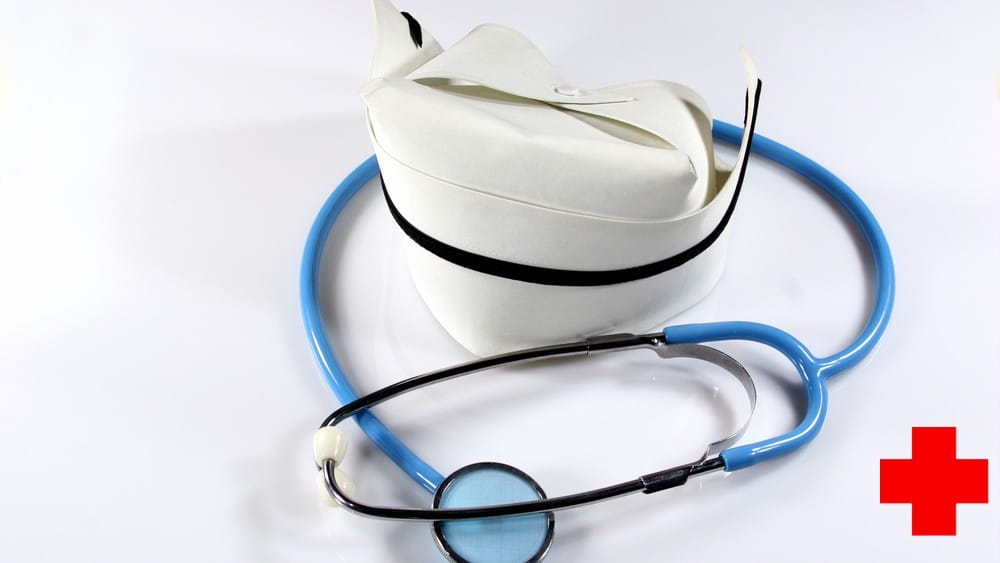Hello readers!
Welcome to another enlightening article that will help you learn and understand the various CNA abbreviations and acronyms.
By the end of this article, you will be able to identify and relevantly use all the abbreviations without any difficulty.
Specifically, our focus will be on:
- The importance of CNA abbreviations
- Top CNA abbreviations in the nursing industry
- Nursing abbreviations every CNA should know
Let us get you familiar with the not-so-common terminologies to help you efficiently communicate with other medical personnel.
CNA Abbreviations List – Introduction

CNA stands for Certified Nursing Assistant, and this profession is an integral part of any hospital setting or healthcare facility.
CNAs are also referred to as nursing assistants, patient care assistants, or nurse’s aides.
As a healthcare professional, you would often encounter unique terms like BP, CPR, EEG, and more.
While some of them may know the meaning or full form, other CNA abbreviations might strike as new.
We will cover all the relevant abbreviations and acronyms in this CNA Abbreviations List.
CNA is considered an entry-level position; however, it helps you kickstart your career as a licensed practical nurse or as a worker in healthcare management.
As most of the responsibilities of a CNA are directly related to the hospital and medical procedures, they need to get familiar with all the abbreviations their seniors would use during these procedures.
CNA Abbreviations and Acronyms

However, before we move on to the terminologies, you must understand the difference between “abbreviations” and “acronyms.”
- An abbreviation is a short form used instead of a whole word or phrase. For example, ht. or hgt. Used instead of height.
- An acronym is a short form made from the initial letters of each word in a compound term. For example, BP for blood pressure.
Here are the necessary medical terminologies to help you with effective and efficient communication in a healthcare facility.
| CNA Abbreviations and Acronyms | Meaning or Full Forms |
| a.a | Of each, equal parts |
| abd | Abdomen |
| a.c | Before meals |
| ABR | Absolute Bed Rest |
| Adm. | Admission |
| A.D | Admitting Diagnosis |
| ADL | Activities of Daily Living |
| A&D | Admission and Discharge |
| ad lib | As desired |
| A.M or AM (a.m. or am) | Morning |
| Ad. spec | Admission Urine Specification |
| AIDS | Acquired Immunodeficiency Syndrome |
| AKA | Above-the-Knee Amputation |
| amb | Ambulatory; ambulate |
| amt | amount |
| ap | apical |
| AU | Both ears |
| Ad lib | As much as required |
| A/G | albumin/globulin ratio |
| AAL | Anterior axillary line |
| AV | atrioventricular |
| ABG | Arterial blood gasses |
| ACLS | Advanced cardiac life support |
| ACTH | Adrenocorticotropic hormone |
| ADH | Antidiuretic hormone |
| A.P. | Appendectomy |
| approx | approximately |
| aqua | water |
| ADSF | Anterior decomposition spinal fusion |
| AFB | Acid-fast bacilli |
| AFP | Alpha-fetoprotein |
| AGA | Appropriate for gestational age |
| AI | Aortic insufficiency |
| ALD | Alcoholic liver disease |
| ALP | Alkaline phosphatase |
| ALL | Acute lymphocytic leukemia |
| ALT | Alanine aminotransferase; alanine transferase |
| APR | Abdominoperineal resection |
| ARF | Acute renal failure |
| @ | at |
| ASA | Acute surgical abdomen |
| ATN | Acute tubular necrosis |
| B&B (b&b) | Bowel and bladder training |
| BAT | Blunt abdominal trauma |
| B.I.D (bi.id or bid) | Two times a day |
| BIH | Bilateral Inguinal Hernia |
| B/K | Below knee |
| BKA | Below-knee amputation |
| B.M (or b.m) | Bowel movement (feces) – (at times this acronym can also be used for breast milk) |
| BP (or B.P) | Blood pressure |
| B.R (BR or b.r) | Bed rest |
| B.R.P (b.r.p or BRP) | Bathroom privileges |
| B.S | Bachelor of science |
| B.S.C (BSC or b.s.c) | Bedside commode |
| BX | Bopsy |
| c | with |
| Ca | Cancer/ carcinoma/ calcium |
| CAA | Crystalline amino acids |
| CABG | Coronary artery bypass graft |
| CAD | Coronary artery disease |
| CAPD | Continuous ambulatory pulmonary dialysis |
| Cath. | Catheter |
| CAT | Computerized axial tomography |
| C.B.C or CBC | Complete blood count |
| C.B.R or cbr | Complete bed rest |
| CBD | Common bile duct |
| CBDE (C.B.D.E) | Common bile duct exploration |
| CBG | Capillary blood gas |
| C.B.S or CBS | Capillary blood sugar |
| C.c or cc | Cubic centimeter |
| C.C.U or CCU | Cardiac care or coronary care unit |
| CCU | Clean catch urine |
| CCPD | Continuous cystic peritoneal dialysis |
| CCK | Cholecystokinin |
| CCV | Critical closing volume |
| c/ o (or C/ O) | Complaint of |
| CO2 | Carbon dioxide gas |
| CF | Cystic fibrosis |
| C.H.O or CHO | Carbohydrate |
| CI or C.I | Cardiac index |
| CKD | Chronic kidney disease |
| C.S | Central supply |
| C.S.D | Central service department |
| C.S.R | Central or control supply room |
| CVA | Cerebrovascular accident (stroke) |
| CPR | Cardiopulmonary resuscitation |
| CML | Chronic myelogenous leukemia |
| C.N or CN | Cranial nerves |
| C.N.S or CNS | Central nervous system |
| CLP | Cleft lip and palate |
| CO | Cardiac output |
| COPD | Chronic obstructive pulmonary disease |
| CP | Chest pain |
| CP | Cleft palate |
| CPP | Cerebral perfusion pressure |
| CRF | Chronic renal failure (kidney failure) |
| CSF | Cerebrospinal fluid |
| CT | Computerized tomography |
| CVP | Central venous pressure |
| D3 | Distal third |
| D5W | 5% dextrose in water |
| D.A.T or DAT | Diet as tolerated |
| d/c or dc | Discontinue |
| D.I.C or DIC | Disseminated intravascular coagulopathy |
| D.I.H or DIH | Direct inguinal hernia |
| D.K.A or DKA | Diabetic ketoacidosis |
| D.R, d.r or Del.M. | Delivery room |
| Dish or Disch or D/C | Discharge |
| DL | Direct laryngyscopy |
| DM | Diabetic Mellitus |
| DNA | Deoxyribonucleic asic |
| D&C or D.%C | Dilatation and curettage |
| DNR | Do not resuscitate |
| D.O.A or DOA | Dead on arrival |
| DOE | Dyspnea on exertion |
| Dr or Dr. | Doctor |
| drsg. | Dressing |
| DPT | Diphtheria- pertussis- tetanus |
| DVT | Deep venous thrombosis |
| DX or dx | Diagnosis |
| EAA | Essential amino acids |
| EBL | Estimated blood loss |
| ECCE | Extracapsular cataract extraction |
| EKG or ECG | Electrocardiogram |
| ECF | Extracellular fluid |
| EDH | Epidural hematoma |
| E.D or ED or ER | Emergency department or emergency room |
| E.E.G. or EEG | Electroencephalogram |
| EMG | Electromyogram |
| EMV | Eyes, motor, verbal response- The Glasgow coma scale |
| E.E.N.T. or EENT | Eyes, ears, nose, throat |
| E.S.R. or ESR | Erythrocyte sedimentation rate |
| ESRD | End-stage renal disease |
| E. or E | Enema |
| ET or ETT | Endotracheal tube |
| EUA | Examination under anesthesia |
| °F | Fahrenheit degree |
| F or Fe (F. or FE.) | Female |
| F.B.E | Foreign body extraction |
| F.B.S (FBS) | Fasting blood sugar |
| FDA | Food and drug administration |
| FEV | Forced expiratory volume |
| FF (or F.F.) | Forced feed or forced fluids |
| FFP | Fresh frozen plasma |
| FIA | Fistula in ano |
| FNA | Family nurse practitioner |
| ft | Foot |
| FTSG | Full-thickness skin graft |
| Fx | Fracture |
| Fx urine | Fractional urine |
| GB | Gallbladder |
| GC | Gonnorhea |
| GCS | Glascow coma scale |
| G.E.R.D or GERD | Gastroesophageal reflux disease |
| GETA | gastro |
| G.I. or GI | Gastrointestinal |
| GSW | Gunshot wound |
| gt | One drop |
| gtt | Two or more drops |
| G.T.T or GTT | Glucose tolerance test |
| G.U or GU | General endotracheal anesthesia |
| G.Y.N. or Gyn | Gynecology |
| Hb | Hemoglobin |
| HBP | High blood pressure |
| HDL | High-density lipoprotein |
| HCG | Human gonadotropin hormone |
| HEENT | Head. eyes, ears, nose, throat |
| HOB | Head of bed |
| Hr | Hour |
| Hs | Hour of sleep or bedtime |
| Ht | Height |
| HCT | Hematocrit |
| HD | Hemodialysis |
| IBG | Iliac bone graft |
| I&D | Incisions and drainage |
| I&O | Intake and output |
| I.C.U | Intensive care unit |
| ICS | Intercostal space |
| IIH | Indirect inguinal hernia |
| IRR or Irr. | Irregular |
| IOC | Intraoperative Cholangiogram |
| IV or I/V or I.V. | Intravenous |
| L or l | Litre |
| lb | Pound (weight) |
| Lab. | Laboratory |
| L.V.N. or LVN | Licensed vocational nurse |
| M | Male |
| Mat | Maternity |
| M.D. (MD) | Medical doctor |
| ml | Milliliter |
| min | Minute |
| Mn or m/n | Midnight |
| NA (N.A. or N/A) | A nursing assistant or nursing aide |
| N.G.T. or N/G tube | Naso-gastric tube |
| noct | Nocturnal or at night |
| NP | Nursing procedure |
| N.P.O. or NPO | Nothing by mouth or nil per oral |
| NSY or nsy | Nursery |
| O2 | Oxygen |
| O.B. (OB) | Obstetrics |
| Obt. | Obtained |
| O.J. (OJ) | Orange juice |
| O.O.B. (OOB) | Out of bed |
| O.P.D. (OPD) | Outpatient department |
| Orb. | Orderly |
| O.R. (OR) | Operating room |
| O.T. (OT) | Occupational therapy |
| O.T. | Oral temperature |
| Ortho | Orthopedics |
| OZ or oz. | Ounce |
| P.A.R. (PAR) | Postanesthesia room |
| Pc | After meals |
| Peds (Ped) | Pediatrics |
| P.M. (PM) | Afternoon |
| P.M.C (PMC) | Postmortem care |
| P.N. (PN) | Pneumonia |
| po | Orally or by mouth |
| Post-op | Postoperative – after surgery |
| Pre-op | Before surgery |
| Post-op spec. | Postoperative urine specimen |
| PP | Postpartum (after delivery) |
| Post | After |
| Pre | Before |
| Prep | Prepare (to prepare the patient before surgery like shaving hair off their skin) |
| Pt. (pt) | Patient |
| P.T. (PT) | Physical therapy |
| q | Everyday – daily |
| qam (Q.A.M.) | Every morning |
| qod (Q.O.D.) | Every other day |
| qhs (Q.H.S.) | Every night/ at bedtime/ at the hour of sleep |
| qd | Hourly – every hour |
| q2h | Two hourly- every two hours |
| q3h | Three hourly- every three hours |
| q4h | Four hourly- every four hours |
| qid (QID) | Four times a day |
| qs | Sufficient quantity (as much as needed) |
| qt | Quart |
| R ® | Rectal |
| RM (rm) | Room |
| RN (R.N.) | Registered nurse |
| Rom (R.O.M) | Range of motion |
| R Rm. (RM) | Recovery room |
| Rx | Treatment or prescription |
| S&A | Sugar and acetone |
| S&A test | Sugar and acetone test |
| S&K test | Sugar and ketone test |
| S.O.B. (SOB) | Shortness of breath |
| SOS | When required; if necessary |
| Spec. | Specimen |
| s or? | Without |
| ss or? | One-half |
| Stat | Immediately; at once |
| STD | Sexually transmitted disease |
| Surg. | Surgery |
| tid (T.I.C.) | Thrice a day |
| tlc (TLC) | Tender loving care |
| TPR (T.P.R) | Temperature, pulse, respiration |
| TWE (T.W.E.) | Tap water enema |
| U/A (u/a) | Urinalysis |
| Ung. | Ointment |
| UTI | Urinary tract infection |
| VS (V.S) | Vital signs |
| WBC (W.B.C) | White blood count |
| w/c | Wheelchair |
| wt | Weight |
| WC (W.C) | Ward clerk |
Conclusion

Do not get confused by looking at these terminologies or CNA abbreviations. It can be difficult to absorb so much information at once.
The key is to gradually learn these terms and practice with abbreviation quizzes and exams available online.
If you want to pursue a career in nursing, it is essential that you consider improving your knowledge regarding CNA abbreviations and acronyms because you will be using them daily in your healthcare practice.
FAQs

What are some commonly used nursing abbreviations?
To practice as a nurse it is essential to learn the medical terminologies. Some of the most common nursing abbreviations are:
– Adm. (admission)
– Dx (diagnosis)
– Rx (treatment)
– OR (operation room)
– I&C (incision and drainage)
What is a neg medical abbreviation?
As per the medical standards, NEG means negative or not affirmative. This abbreviation is used widely in medical laboratories and their test reports.
What is PRN medical abbreviation?
PRN, in the medical profession, stands for ‘pro re nata,’ It means that the medicine and its administration to the patient are not scheduled- it should be administered as required.
What does AC stand for in CNA?
For a practicing CNA or certified nursing assistant, A.C or ac stands for medication “before meals”.
What is the ADL nursing abbreviation?
ADL stands for activities of daily living. This CNA terminology is widely used by medical and healthcare personnel.









